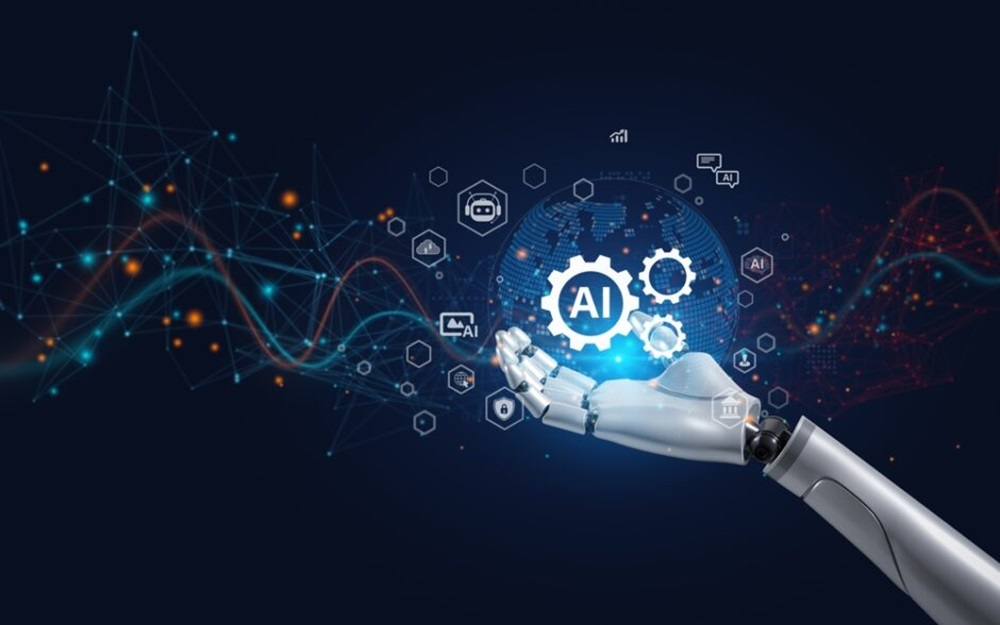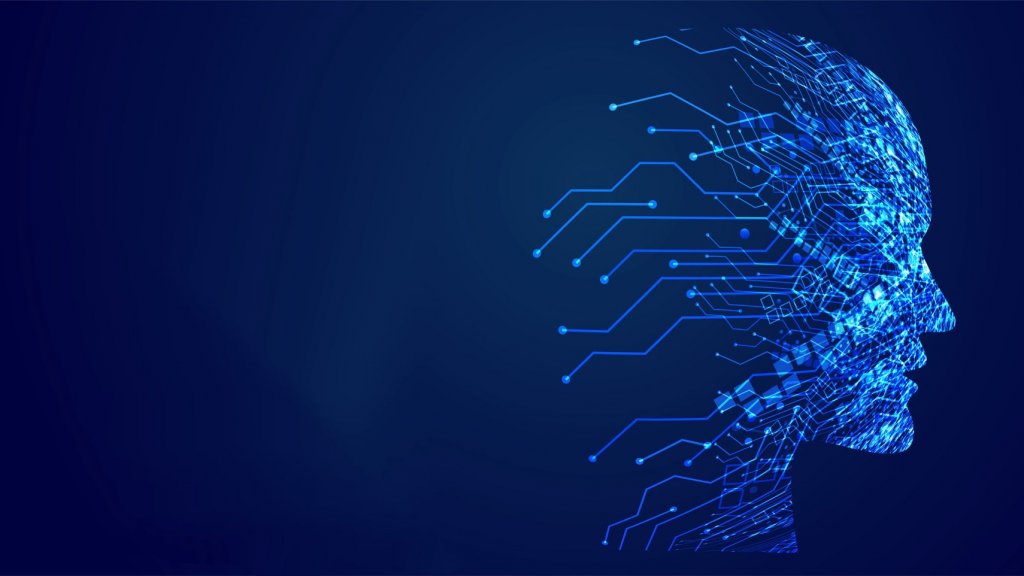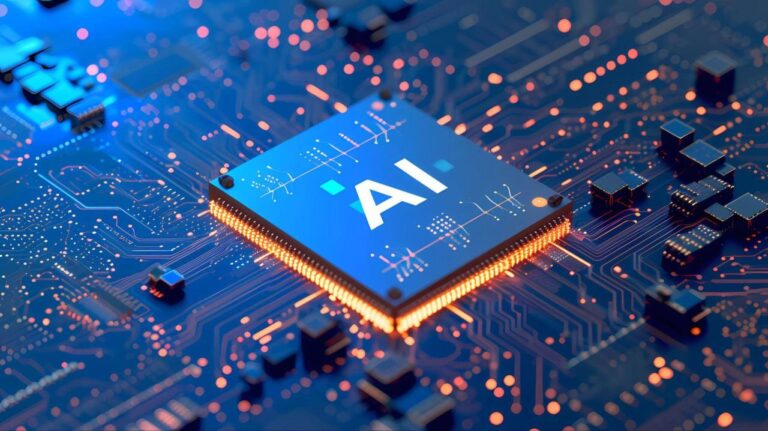In an era of relentless innovation, Artificial Intelligence (AI) stands as the undeniable titan, not merely redefining, but actively reshaping the very fabric of future technology. From automating mundane tasks to orchestrating complex scientific breakthroughs, AI’s influence is pervasive and ever-expanding. This comprehensive exploration delves into the multifaceted impact of AI across various sectors, highlighting its transformative power and the exciting, yet challenging, path it lays before us. We’ll uncover how AI is not just a tool, but a fundamental shift in how we interact with technology, approach problem-solving, and envision progress.
The Core of Artificial Intelligence

At its heart, AI encompasses the development of computer systems capable of performing tasks that typically require human intelligence. This includes learning, reasoning, problem-solving, perception, and even language understanding. The field is broadly categorized into:
A. Machine Learning (ML): A subset of AI where systems learn from data without explicit programming. Instead of being given step-by-step instructions, ML algorithms are “trained” on vast datasets, identifying patterns and making predictions or decisions based on what they’ve learned. This includes:
* Supervised Learning: Training models on labeled datasets, where the desired output is known. Think of an email spam filter learning from emails marked as “spam” or “not spam.”
* Unsupervised Learning: Discovering hidden patterns or structures in unlabeled data. Clustering customer demographics to identify market segments is a prime example.
* Reinforcement Learning: Training agents to make sequences of decisions in an environment to maximize a reward. This is often seen in robotics and game playing, where the AI learns through trial and error.
B. Deep Learning (DL): A specialized form of ML that uses neural networks with multiple layers (hence “deep”). These networks are inspired by the structure and function of the human brain, excelling in tasks like image recognition, natural language processing, and speech synthesis. The sheer scale and complexity of these networks allow them to process and learn from enormous amounts of data, leading to unprecedented accuracy in many applications.
C. Natural Language Processing (NLP): The branch of AI that deals with the interaction between computers and human language. NLP enables computers to understand, interpret, and generate human language, making technologies like voice assistants, translation tools, and sentiment analysis possible. The ability of machines to not just process words, but to grasp their meaning and context, is a monumental leap in human-computer interaction.
D. Computer Vision (CV): Equipping computers with the ability to “see” and interpret visual information from the real world. This involves processing and analyzing images and videos to identify objects, people, and scenes. Applications range from facial recognition and autonomous vehicles to medical imaging analysis and quality control in manufacturing. The precision and speed with which AI can interpret visual data far surpass human capabilities in many scenarios.
AI’s Transformative Impact Across Industries
The widespread adoption of AI is not merely an incremental improvement; it’s a fundamental paradigm shift that is reshaping every industry imaginable. Its ability to process vast amounts of data, identify complex patterns, and make highly accurate predictions is revolutionizing operations, enhancing decision-making, and creating entirely new possibilities.
1. Healthcare
AI is a game-changer in healthcare, moving us towards a future of more precise, personalized, and proactive medical care. Its applications are diverse and profound:
A. Drug Discovery and Development: AI algorithms can analyze massive datasets of genetic information, molecular structures, and existing drug compounds to identify potential new drug candidates faster and more efficiently. This significantly reduces the time and cost associated with bringing new medications to market, offering hope for previously untreatable conditions. AI can also predict the efficacy and potential side effects of compounds, streamlining the drug development pipeline.
B. Disease Diagnosis and Prediction: AI-powered systems can analyze medical images (X-rays, MRIs, CT scans) with incredible accuracy, often detecting subtle anomalies that might be missed by the human eye. This leads to earlier and more accurate diagnoses of diseases like cancer, improving patient outcomes. Furthermore, AI can predict disease outbreaks, identify individuals at high risk for certain conditions based on their genetic predispositions and lifestyle data, and even forecast patient deterioration in critical care settings.
C. Personalized Treatment Plans: By analyzing a patient’s unique genetic profile, medical history, lifestyle, and response to previous treatments, AI can recommend highly personalized treatment plans. This moves away from a “one-size-fits-all” approach to medicine, optimizing therapies for individual patients and maximizing their chances of recovery. AI can also help in dosage optimization and predicting patient response to specific medications.
D. Robot-Assisted Surgery: AI-driven robotic systems offer surgeons enhanced precision, dexterity, and control during complex procedures. These robots can perform intricate movements that are beyond human capability, reducing invasiveness, minimizing blood loss, and accelerating patient recovery times. They also provide surgeons with real-time data and enhanced visualization, further improving surgical outcomes.
2. Finance
The financial sector is undergoing a rapid AI transformation, leveraging the technology to enhance security, optimize operations, and revolutionize customer interactions.
A. Fraud Detection: AI systems are incredibly adept at identifying suspicious patterns in financial transactions that might indicate fraudulent activity. By analyzing vast amounts of data in real-time, AI can flag unusual spending habits, geographical inconsistencies, or abnormal transaction frequencies, significantly reducing financial losses due to fraud and protecting consumers.
B. Algorithmic Trading: AI algorithms can analyze market data, news feeds, and economic indicators at lightning speed to make high-frequency trading decisions. This allows for rapid execution of trades based on predicted market movements, potentially generating substantial profits. However, it also introduces complexities and risks that require careful management.
C. Credit Scoring and Loan Underwriting: AI provides a more sophisticated and nuanced approach to assessing creditworthiness. Beyond traditional metrics, AI can analyze a wider range of data points, including behavioral patterns and alternative data sources, to provide more accurate credit scores and reduce the risk of loan defaults. This can also help in extending credit to underserved populations.
D. Personalized Financial Advice: AI-powered chatbots and virtual assistants are offering personalized financial advice, helping individuals manage their investments, budgets, and savings. These tools can analyze spending habits, suggest investment strategies tailored to individual risk tolerances, and provide timely alerts, making financial management more accessible and efficient for the everyday consumer.
3. Manufacturing
AI is at the forefront of the Fourth Industrial Revolution (Industry 4.0), transforming manufacturing processes from isolated tasks into interconnected, intelligent systems.
A. Predictive Maintenance: AI algorithms analyze data from sensors on machinery to predict when equipment is likely to fail. This allows for proactive maintenance, preventing costly breakdowns, minimizing downtime, and extending the lifespan of machinery. This shifts maintenance from a reactive to a highly predictive model, optimizing operational efficiency.
B. Quality Control: AI-powered computer vision systems can inspect products with unparalleled speed and accuracy, identifying defects that might be missed by human inspectors. This ensures higher product quality, reduces waste, and improves overall manufacturing efficiency. These systems can learn from new defects, continuously improving their inspection capabilities.
C. Robotics and Automation: AI is the brain behind advanced industrial robots, enabling them to perform complex tasks with precision and adaptability. These robots can work collaboratively with humans, handle dangerous or repetitive tasks, and adapt to changing production requirements, leading to increased productivity and safety in the workplace.
D. Supply Chain Optimization: AI analyzes vast amounts of data related to logistics, inventory, demand forecasting, and supplier performance to optimize supply chain operations. This results in more efficient routing, reduced shipping costs, minimized inventory levels, and improved responsiveness to market fluctuations, creating a more resilient and agile supply chain.
4. Transportation
AI is steering the future of transportation, promising safer, more efficient, and ultimately autonomous modes of travel.
A. Autonomous Vehicles: Self-driving cars, trucks, and drones are perhaps the most visible application of AI in transportation. AI systems process real-time data from sensors, cameras, and lidar to perceive their surroundings, navigate, and make decisions without human intervention. This has the potential to drastically reduce accidents caused by human error and optimize traffic flow.
B. Traffic Management: AI analyzes real-time traffic data, weather conditions, and event information to optimize traffic light timings, reroute vehicles to avoid congestion, and predict potential bottlenecks. This leads to smoother traffic flow, reduced travel times, and lower fuel consumption, making urban transportation more efficient.
C. Logistics and Route Optimization: AI algorithms are used to optimize delivery routes for trucking companies and logistics providers, considering factors like traffic, delivery windows, and fuel efficiency. This reduces operational costs, improves delivery times, and minimizes environmental impact.
D. Predictive Maintenance for Fleets: Similar to manufacturing, AI can analyze data from vehicle sensors to predict maintenance needs for entire fleets, ensuring vehicles are always in optimal condition, minimizing breakdowns, and extending their operational life.
5. Retail and E-commerce
AI is revolutionizing the retail landscape, creating highly personalized shopping experiences and streamlining operations.
A. Personalized Recommendations: AI algorithms analyze customer Browse history, purchase patterns, and demographic data to provide highly personalized product recommendations. This enhances the customer experience, increases sales, and fosters customer loyalty by presenting relevant products at the right time.
B. Customer Service Chatbots: AI-powered chatbots provide instant, 24/7 customer support, answering queries, resolving issues, and guiding customers through the shopping process. This improves customer satisfaction, reduces response times, and frees up human agents for more complex tasks.
C. Inventory Management: AI analyzes sales data, seasonality, and market trends to optimize inventory levels, minimizing stockouts and overstocking. This reduces storage costs, prevents lost sales, and ensures products are available when customers want them.
D. Dynamic Pricing: AI algorithms can dynamically adjust product prices in real-time based on demand, competitor pricing, and other market factors. This optimizes revenue, helps clear excess inventory, and maximizes profitability.
The Ethical Considerations and Challenges of AI

While the promise of AI is immense, its rapid advancement also brings forth a host of ethical considerations and significant challenges that demand careful attention and proactive solutions. Ignoring these aspects would be detrimental to the responsible development and deployment of AI.
1. Bias and Fairness:
AI systems are trained on data, and if that data reflects existing societal biases, the AI will perpetuate and even amplify those biases. This can lead to discriminatory outcomes in areas like:
A. Facial Recognition: If trained predominantly on data from certain demographics, facial recognition systems can exhibit lower accuracy for other groups, leading to misidentification and potential wrongful accusations.
B. Loan Applications and Hiring: Biased AI algorithms used in these processes can unfairly disadvantage certain individuals or groups, perpetuating existing inequalities.
C. Criminal Justice: Predictive policing algorithms or sentencing recommendations, if biased by historical data, could disproportionately target or penalize specific communities.
Addressing bias requires diverse and representative datasets, transparent algorithm design, and continuous auditing of AI systems for fair outcomes.
2. Job Displacement:
As AI and automation become more sophisticated, there’s a legitimate concern about widespread job displacement, particularly in industries involving repetitive or predictable tasks. While AI is creating new jobs, the transition can be challenging for those whose skills become obsolete. This necessitates:
A. Reskilling and Upskilling Programs: Investing in education and training initiatives to equip the workforce with the skills needed for new, AI-augmented roles.
B. Social Safety Nets: Exploring new models of social support to assist individuals affected by job displacement during economic transitions.
C. Focus on Human-AI Collaboration: Shifting the focus from full automation to how AI can augment human capabilities, creating hybrid roles that leverage the strengths of both.
3. Privacy and Data Security:
AI systems often require vast amounts of data to function effectively. This raises significant concerns about data privacy, how personal information is collected, stored, and used.
A. Data Breaches: The more data AI systems collect, the larger the target for malicious actors, increasing the risk of data breaches and exposure of sensitive personal information.
B. Surveillance: The pervasive use of AI-powered cameras and sensors can lead to concerns about constant surveillance and the erosion of individual privacy.
C. Consent and Anonymization: Ensuring individuals provide informed consent for data collection and implementing robust anonymization techniques to protect identities are crucial.
Robust data governance frameworks, privacy-preserving AI techniques (like federated learning), and strict regulatory oversight are essential to mitigate these risks.
4. Accountability and Control:
As AI systems become more autonomous and make critical decisions, determining accountability when things go wrong becomes complex.
A. Who is Responsible? In the event of an accident involving an autonomous vehicle, or a medical misdiagnosis by an AI system, who bears responsibility – the developer, the deployer, or the AI itself?
B. Black Box Problem: Many advanced AI models, particularly deep learning networks, are “black boxes,” meaning their decision-making processes are opaque and difficult to interpret. This lack of transparency can hinder our ability to understand why an AI made a certain decision, making it challenging to debug, audit, or trust.
C. Losing Control: While speculative, the long-term concern of AI systems becoming too powerful or uncontrollable, and potentially acting against human interests, is a topic of ongoing ethical and philosophical debate.
Conclusion
The Artificial Intelligence revolution is not a distant possibility; it is unfolding now, dramatically redefining the landscape of technology and society. Its ability to learn, adapt, and perform complex tasks with speed and accuracy far beyond human capabilities promises an era of unprecedented progress. From transforming healthcare and finance to revolutionizing manufacturing and transportation, AI is the driving force behind the next wave of innovation.
However, with this immense power comes significant responsibility. Addressing the ethical considerations of bias, job displacement, privacy, and accountability is paramount. Proactive measures, including robust regulation, ethical AI development, and investment in human reskilling, are essential to ensure that AI serves humanity’s best interests.
The journey ahead is one of continuous learning, adaptation, and collaboration. By embracing the potential of AI while diligently addressing its challenges, we can collectively navigate this transformative era, harnessing its power to build a more intelligent, efficient, and prosperous future for all. The future isn’t just being built with AI; it’s being redefined by it, and our role is to shape that redefinition thoughtfully and responsibly.




